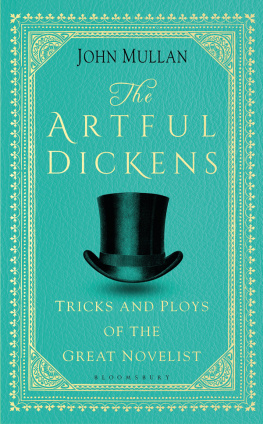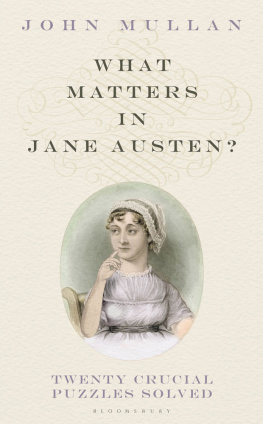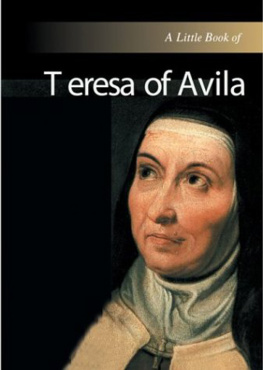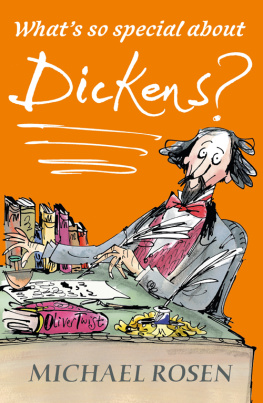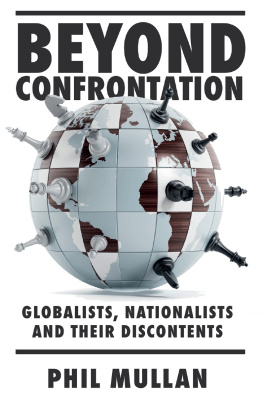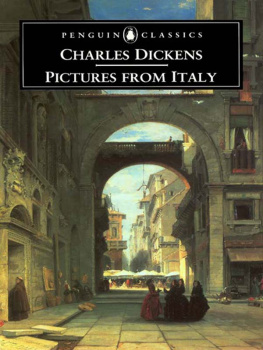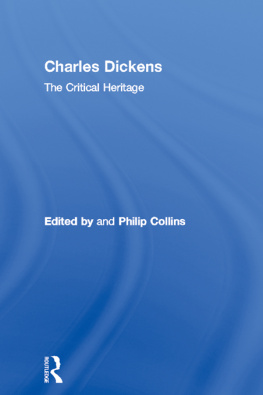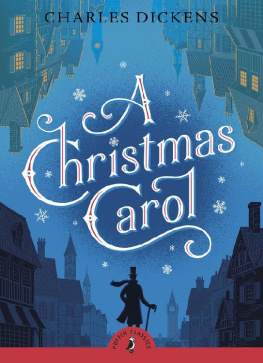John Mullan - The Artful Dickens
Here you can read online John Mullan - The Artful Dickens full text of the book (entire story) in english for free. Download pdf and epub, get meaning, cover and reviews about this ebook. publisher: Bloomsbury Publishing, genre: Detective and thriller. Description of the work, (preface) as well as reviews are available. Best literature library LitArk.com created for fans of good reading and offers a wide selection of genres:
Romance novel
Science fiction
Adventure
Detective
Science
History
Home and family
Prose
Art
Politics
Computer
Non-fiction
Religion
Business
Children
Humor
Choose a favorite category and find really read worthwhile books. Enjoy immersion in the world of imagination, feel the emotions of the characters or learn something new for yourself, make an fascinating discovery.
- Book:The Artful Dickens
- Author:
- Publisher:Bloomsbury Publishing
- Genre:
- Rating:5 / 5
- Favourites:Add to favourites
- Your mark:
- 100
- 1
- 2
- 3
- 4
- 5
The Artful Dickens: summary, description and annotation
We offer to read an annotation, description, summary or preface (depends on what the author of the book "The Artful Dickens" wrote himself). If you haven't found the necessary information about the book — write in the comments, we will try to find it.
The Artful Dickens — read online for free the complete book (whole text) full work
Below is the text of the book, divided by pages. System saving the place of the last page read, allows you to conveniently read the book "The Artful Dickens" online for free, without having to search again every time where you left off. Put a bookmark, and you can go to the page where you finished reading at any time.
Font size:
Interval:
Bookmark:

THE ARTFUL DICKENS
ALSO BY JOHN MULLAN
Sentiment and Sociability: The Language of Feeling in the Eighteenth Century
Eighteenth-Century Popular Culture: A Selection
(with Christopher Reid)
How Novels Work
Anonymity: A Secret History of English Literature
What Matters in Jane Austen? Twenty Crucial Puzzles Solved

BLOOMSBURY PUBLISHING
Bloomsbury Publishing Plc
50 Bedford Square, London, WC1B 3DP, UK
BLOOMSBURY, BLOOMSBURY PUBLISHING and the Diana logo are trademarks of Bloomsbury Publishing Plc
First published in Great Britain 2020
This electronic edition published in 2020
Copyright John Mullan, 2020
John Mullan has asserted his right under the Copyright, Designs and Patents Act, 1988, to be identified as Author of this work
All rights reserved. No part of this publication may be reproduced or transmitted in any form or by any means, electronic or mechanical, including photocopying, recording, or any information storage or retrieval system, without prior permission in writing from the publishers
A catalogue record for this book is available from the British Library
ISBN: HB: 978-1-4088-6681-8; EBOOK: 978-1-4088-6683-2
For John Sutherland
Contents
Quotations from Charles Dickenss novels are taken from Oxford University Presss Clarendon editions, where these exist. Where they do not, quotations are from the most recent Penguin Classics editions. Particular editions are listed in the Bibliography. References are given within the text, by book or volume and chapter number. The aim has been to enable readers easily to locate passages, irrespective of the editions that they might have to hand.
Quotations from Dickenss journalism are, where possible, taken from The Dent Uniform Edition of Dickens Journalism , ed. Michael Slater and John Drew, 4 vols (London: J. M. Dent, 19942000), abbreviated to Dickens Journalism in the notes.
Quotations from Dickenss letters are taken from The Letters of Charles Dickens , ed. Madeline House, Graham Storey, et al., 12 vols. (Oxford: Clarendon Press, 19652002), abbreviated to Letters in the notes.
Quotations from Forsters Life of Dickens, first published 18724, are taken from John Forster, The Life of Charles Dickens , ed. A. J. Hopp, 2 vols (London: J. M. Dent, 1966) abbreviated to Forster in the notes.
such conjurings never took place in these parts before
Letter to C. C. Felton, 2 January 1844
What is so good about Dickenss novels? This book tries to answer that question, oddly evaded by many who have written about him. While it is common to hear Dickens called our greatest novelist, it is easy to find even those who acknowledge his status telling us what is bad about his novels. They are sentimental, melodramatic, sermonising. His characters are grotesque, or monstrous, or two-dimensional. And it has been like this since his own lifetime. Nobody could gainsay his popularity, but this meant that he was a great entertainer rather than a great writer. The author satirised as Mr Popular Sentiment in Anthony
With Dickens, supposed faults can often be virtues. Take one small example from Great Expectations . It is Pips second visit to Miss Havishams gloomy home, Satis House, and his first encounter with her relations, the Pockets, who haunt the place in the hope of securing an inheritance.
There were three ladies in the room and one gentleman. Before I had been standing at the window five minutes, they somehow conveyed to me that they were all toadies and humbugs, but that each of them pretended not to know that the others were toadies and humbugs: because the admission that he or she did know it, would have made him or her out to be a toady and humbug.
(Ch. XI)
Many are the protests against the supposed shallowness of Dickenss characterisations, his pleasure in summing a person up in a sentence or two. Yet sometimes this readiness immediately to appraise a character is just what is truthful. Pip is about eight years old at the time remembered, and the narration recaptures his childish perceptiveness. The certainty of his judgement is there in the repetition of that irreverent phrase toadies and humbugs. It serves these people right, that the child sees through them. (It soon becomes clear that, while the Pockets behave obsequiously to the rich old woman, they are entirely self-interested and predatory.) The repetition sounds ludicrous and it is: each of these hangers-on is trapped in an absurd deception that fools no one, but must be kept up.
The passage is based on a set-up that Dickens had recorded in the notebook of Memoranda, where, from January 1855 until the late 1860s, he jotted down ideas for future novels. Here, perhaps only a few months before he began Great Expectations , he had written,
The House-full of Toadies and Humbugs. They all know and despise one another; butpartly to keep their hands in, and partly to make out their own individual casespretend not to detect one another.
When he raided this, Dickens characteristically seized on the colloquial insult Toadies and Humbugs that he had used in his note to himself. A more refined novelist would not pass judgement so readily (these characters have not even spoken yet) or use three times in a row such an idiomatic slur, but Dickenss unpolite English brilliantly gets the clarity of a childs perception. They somehow conveyed to me is audaciously convincing: the requirement for a novelist to provide some grounds for his psychological judgement is waved away. Somehow, Pip immediately knew what these people were like, the way a child sometimes does. The passage exemplifies Dickenss special mix of unliterariness and formal daring. This book tries to do justice to those qualities, sometimes unappreciated by critics even when relished by readers. Dickenss very popularity seems to have made it hard to recognise his technical boldness and his experimental verve. It is strange that it needs saying, but our enjoyment of Dickens does not come despite our better judgement, but because of his extraordinary skills as a novelist.
He was always trying something new. As one of the
Dickens ha Expectations, Mr Pocket, father of Pips friend Herbert, has been to Harrow and Cambridge, but this has given him an air of bewilderment and the qualifications merely to follow the calling of a Grinder (Ch. XXV). That is to say, he is doomed to be a private tutor, cramming students for exams. Those indolent young gentlemen in the novels (James Harthouse, Sydney Carton, Eugene Wrayburn) have had a good education, and look what it has done for them! Like one of his alter egos, David Copperfield, Dickens was a self-made man of literature. Lewes recalled being shocked when he visited the young author in Doughty Street and saw that his book collection consisted entirely of three-volume novels and books of travels, all of them, he believed, presentation copies from authors or publishers.
Yet Dickens had always been a hungry reader. While he might have ignored literary decorum, his novels are densely allusive. They are saturated in Shakespeare, for one thing..
Then it was that HEEP began to favour me with just so much of his confidence, as was necessary to the discharge of his infernal business. Then it was that I began, if I may so Shakespearianly express myself, to dwindle, peak, and pine.
(Ch. LII)
Shakespearianly: it is a word that Mr Micawber audibly enjoys coining. The Oxford English Dictionary records the earliest use of Shakespearianly as being in a review article of 1861, some eleven years later than Mr Micawbers neologism. He takes dwindle, peak, and pine from the First Witch, who is describing the fate of a sailor whom she curses. The quote is wittily appropriate (Mr Micawber must have been bewitched to fall for the schemes of HEEP) and comically superfluous. With his Shakepearian flourish, Mr Micawber, a character whose love of words was inspired by Dickenss father, John Dickens, rises above Heeps low designs.
Font size:
Interval:
Bookmark:
Similar books «The Artful Dickens»
Look at similar books to The Artful Dickens. We have selected literature similar in name and meaning in the hope of providing readers with more options to find new, interesting, not yet read works.
Discussion, reviews of the book The Artful Dickens and just readers' own opinions. Leave your comments, write what you think about the work, its meaning or the main characters. Specify what exactly you liked and what you didn't like, and why you think so.

